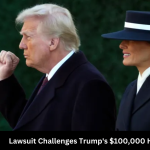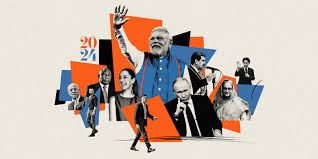The landscape of high-skilled immigration in the United States is facing a seismic shift, culminating in a landmark legal confrontation.
- Understanding the H-1B Visa: The Lifeblood of Tech and Beyond
- The Genesis of the Controversy: The Proposed $100,000 Fee Hike
- The Lawsuit: Unpacking the Legal Challenge
- 1. The “Arbitrary and Capricious” Argument
- 2. The Constitutional Argument: Separation of Powers
- 3. The Economic Impact Argument
- The Ripple Effect: Consequences Beyond the Tech Industry
- The Political and Historical Context
- What’s Next? The Legal and Political Road Ahead
- Frequently Asked Question
- Conclusion
A coalition of major business and industry groups has filed a federal lawsuit challenging one of the most aggressive immigration proposals from the Trump administration: a dramatic increase in the H-1B visa fee, potentially soaring to an unprecedented $100,000.
This legal challenge strikes at the heart of a policy debate that pits immigration restrictions against global economic competitiveness. The lawsuit, which names the U.S.
More Read: Crypto Market Cap Surges Past $4.21T as Bitcoin Nears $124,000
Understanding the H-1B Visa: The Lifeblood of Tech and Beyond
Before delving into the lawsuit, it’s crucial to understand what is at stake. The H-1B visa is a non-immigrant visa that allows U.S. companies to employ foreign professionals in specialty occupations that require theoretical or technical expertise.
Fields such as technology, engineering, medicine, biotechnology, and finance rely heavily on this program to fill critical talent gaps.
Key features of the H-1B program:
-
Annual Cap: There is a congressionally mandated annual cap of 85,000 new H-1B visas, with 20,000 reserved for applicants with a U.S. master’s degree or higher.
-
Employer-Sponsored: The visa is tied to the sponsoring employer, meaning the employee cannot freely change jobs without a new sponsorship.
-
Prevailing Wage: Employers must pay H-1B workers the “prevailing wage” for the occupation in the geographic area to prevent undercutting American workers.
For decades, the H-1B program has been a cornerstone of innovation, allowing American companies to recruit the best and brightest from around the world, particularly in STEM fields where domestic graduation rates have not kept pace with industry demand.
The Genesis of the Controversy: The Proposed $100,000 Fee Hike
The lawsuit takes aim not at a finalized rule, but at a proposed rulemaking from the Department of Homeland Security. In mid-2023, DHS published a notice of proposed rulemaking (NPRM) that included a radical change to the fee structure for H-1B visas.
The most contentious provision was a proposal to significantly increase the fee for H-1B applications, particularly for companies that rely on the program.
While the exact structure was complex, analyses projected that the total cost for a single H-1B visa—including the new fee, existing application costs, and legal fees—could approach $100,000 per employee, a staggering increase from the current baseline.
The administration’s stated rationale was twofold:
-
Funding Immigration Enforcement: A portion of the massive fee increase was earmarked to fund border security measures and the asylum system, arguing that those who benefit from the immigration system should help cover its costs.
-
Protecting American Workers: The administration claimed that exorbitant fees would disincentivize companies from hiring foreign talent and encourage them to recruit, train, and retain American workers instead.
Critics, however, immediately labeled the move a “tax on innovation” and a backdoor attempt to dismantle a legal immigration program without congressional approval.
The Lawsuit: Unpacking the Legal Challenge
The plaintiffs in the case are a powerful consortium of industry leaders, including the U.S. Chamber of Commerce, the National Association of Manufacturers (NAM), and several tech-focused advocacy groups. Their legal filing presents a multi-pronged attack on the proposed fee.
1. The “Arbitrary and Capricious” Argument
The Administrative Procedure Act (APA) governs how federal agencies develop and issue regulations.
It requires that agency actions not be “arbitrary, capricious, an abuse of discretion, or otherwise not in accordance with law.”
The lawsuit argues the $100,000 fee fails this test spectacularly. The plaintiffs contend that DHS:
-
Lacked a Rational Basis: The agency provided no credible economic analysis to justify the specific dollar amount of the fee. Jumping from a few thousand dollars to nearly $100,000 appears punitive rather than based on the actual cost of processing applications.
-
Ignored Contrary Evidence: The lawsuit alleges that DHS disregarded overwhelming data and public comments from businesses detailing the catastrophic economic impact of the fee.
-
Misapplied Statutory Authority: The Immigration and Nationality Act allows DHS to collect fees “at a level that will ensure recovery of the full costs of providing all such services.” The plaintiffs argue that using H-1B fees to fund unrelated border security initiatives far exceeds this statutory authority.
2. The Constitutional Argument: Separation of Powers
This is perhaps the most potent argument in the lawsuit. The plaintiffs assert that the DHS is attempting to legislate through regulation.
-
The Power of the Purse: The Constitution grants the power to levy taxes and control spending exclusively to Congress. By imposing a de facto $100,000 “tax” on H-1B visas to fund other government activities, the executive branch is usurping a core legislative function.
-
Circumventing Congress: For years, various administrations have tried and failed to pass comprehensive immigration reform through Congress. The lawsuit posits that this fee hike is an attempt to achieve a policy objective—severely restricting H-1B visas—that the administration could not accomplish through the democratic process.
3. The Economic Impact Argument
While not a purely legal argument, the lawsuit heavily emphasizes the devastating economic consequences of the proposed fee. It argues the rule would:
-
Cripple American Competitiveness: U.S. companies would be placed at a severe disadvantage in the global war for talent. Competitors in Canada, Australia, and the European Union are actively rolling out welcome mats for high-skilled immigrants.
-
Stifle Innovation and Growth: Startups and mid-sized tech companies, which often operate on thin margins, would be disproportionately harmed. They rely on H-1B visas to access specialized skills they cannot find locally. A $100,000 fee would make this impossible, slowing down R&D and product development.
-
Lead to Job Outsourcing: Rather than paying the prohibitive fee, companies may be forced to open offices abroad and hire talent in other countries, ultimately exporting high-paying jobs and economic activity away from the United States.
-
Hurt All Workers: By stifling company growth and the creation of new teams and projects, the rule would ultimately limit job creation for U.S. citizens as well. H-1B workers often help create teams around them, leading to more managerial, sales, and support roles for Americans.
The Ripple Effect: Consequences Beyond the Tech Industry
The impact of a $100,000 H-1B fee would extend far beyond Silicon Valley.
-
Healthcare: Thousands of doctors and medical researchers in the U.S. are on H-1B visas, particularly in rural and underserved areas facing physician shortages.
-
Universities and Research: Academic institutions and research labs depend on foreign-born scientists, postdoctoral researchers, and engineers to conduct critical research.
-
Manufacturing and Engineering: From automotive to aerospace, advanced manufacturing firms need highly specialized engineers to design and maintain complex systems.
A fee of this magnitude would create severe disruptions across these vital sectors, affecting everything from medical advancements to national infrastructure.
The Political and Historical Context
The lawsuit is the latest chapter in a long-running political battle over the H-1B program. The debate typically centers on two opposing narratives:
-
The “Skilled Worker Gap” Narrative: Proponents of the program argue there is a well-documented shortage of qualified American STEM workers. The H-1B program is essential for filling this gap, driving innovation, and keeping the U.S. economy on the cutting edge.
-
The “American Worker Replacement” Narrative: Critics argue that some companies abuse the program to replace American workers with cheaper foreign labor, suppressing wages and creating unfair competition.
The Trump administration has consistently favored the latter view, implementing a series of policies to restrict the H-1B program, including suspending premium processing, tightening eligibility requirements, and subjecting applications to increased scrutiny.
The proposed $100,000 fee is seen as the most aggressive of these measures.
What’s Next? The Legal and Political Road Ahead
The filing of the lawsuit is just the beginning. The legal process will now unfold over months, if not years.
-
Government’s Response: The Department of Justice, representing DHS, will file a response to the lawsuit, defending the legality of the proposed rule.
-
Injunctions and Hearings: The plaintiffs will likely file a motion for a preliminary injunction to block the rule from taking effect while the case is being decided. The court will hold hearings to consider this motion.
-
Potential Outcomes:
-
Preliminary Injunction Granted: This would be a major victory for the plaintiffs, halting the fee hike and signaling that the court finds their arguments persuasive.
-
The Rule is Struck Down: The court could ultimately rule that the fee is illegal, forcing DHS to withdraw it.
-
The Rule is Upheld: If the court sides with the government, the fee would be implemented, though an appeal to a higher court would be certain.
-
A Compromise: The court could rule that the fee is too high but allow a smaller increase, sending DHS back to the drawing board.
-
The outcome of the 2024 presidential election will also play a crucial role. A new administration could choose to drop the defense of the rule or withdraw it entirely, rendering the lawsuit moot.
Frequently Asked Question
What is the proposed $100,000 H-1B fee, exactly?
It’s not a single, standalone fee. The “$100,000 H-1B fee” is a shorthand for a significant fee hike proposed by the Trump administration. The proposal would dramatically increase existing fees and add a new, massive “Asylum Program Fee” to H-1B visa applications. When combined with existing application costs, legal fees, and other associated expenses, the total cost for a company to sponsor a single H-1B worker could balloon to nearly $100,000, a drastic increase from the current total.
Who is suing to stop this fee?
The lawsuit was filed by a powerful coalition of major business groups, led by the U.S. Chamber of Commerce and the National Association of Manufacturers (NAM). They are joined by other industry-specific associations, particularly from the technology and information sectors, which are among the largest users of the H-1B program.
What are the main legal arguments against the fee?
The plaintiffs are making two primary arguments:
- It’s “Arbitrary and Capricious”: The lawsuit claims the government cannot rationally justify the specific, exorbitant dollar amount. They argue the fee is not based on the actual cost of processing the visa but is instead a punitive measure designed to kill the program.
- It Violates the Constitution: This is the core argument. The lawsuit asserts that the executive branch is attempting to levy what is effectively a new tax to fund unrelated government activities (like the asylum system). The Constitution grants the “power of the purse” solely to Congress, making this fee an unconstitutional overreach of executive power.
Why does the government say it needs this fee?
The Trump administration’s stated justifications are:
- Funding Border Security and Asylum Processing: A core part of the proposal is to use the revenue from these fees to cover the costs of the U.S. asylum system and other immigration enforcement measures.
- Protecting American Workers: The administration argues that by making it much more expensive to hire H-1B workers, companies will be incentivized to recruit, train, and hire American citizens first.
What would be the impact if the fee takes effect?
The impact would be widespread and severe:
- For Companies: It would drastically increase the cost of innovation, making it harder for U.S. firms (especially startups and mid-size companies) to compete for global talent. Many would be forced to open offices abroad and outsource jobs.
- For the Economy: It could stifle growth in tech, healthcare, engineering, and research, sectors that rely on highly specialized global talent to fill gaps in the U.S. workforce.
- For H-1B Applicants: While the fee is paid by the employer, it would make companies far more selective and reluctant to sponsor visas, significantly reducing opportunities for skilled professionals worldwide.
Is this fee in effect right now?
No. The fee is currently only a proposal from the Department of Homeland Security (DHS). The lawsuit was filed to challenge the proposal and prevent it from being finalized and implemented. The legal action seeks a court order to block the rule.
What happens next?
- The case will work its way through the federal court system.
- The government will file a response defending the proposal.
- The business coalition will likely ask the court for a preliminary injunction to prevent the rule from taking effect while the lawsuit is decided.
The judge will hear arguments from both sides and make a ruling.The process could take months or years, and the outcome of the 2024 presidential election could also influence the proposal’s fate, as a new administration could choose to withdraw it entirely.
Conclusion
The lawsuit challenging the $100,000 H-1B visa fee is more than a narrow legal dispute over administrative costs. It is a pivotal battle that will define the United States’ approach to global talent, economic competitiveness, and the separation of powers.
At its core, the case asks fundamental questions: Will the U.S. remain open to the world’s innovators, or will it erect financial walls that drive talent and investment elsewhere?
And does the executive branch have the unilateral power to effectively rewrite immigration law through punitive fees?















